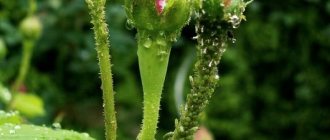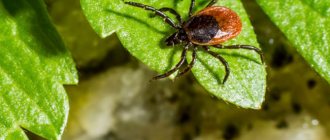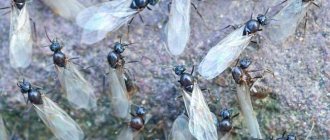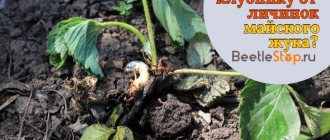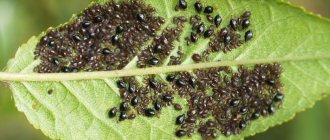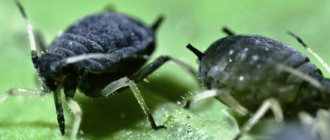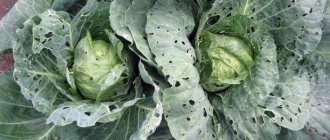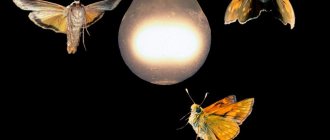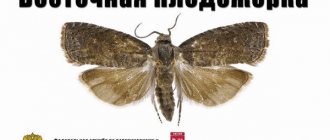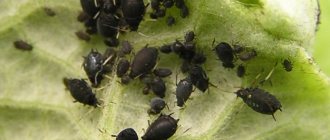Aphids rarely attack strawberries, but when there is an abundance of the pest on the site, such cases occur. It is necessary to fight aphids quickly, otherwise you may not even dream of a harvest. Aphids are not mole crickets, which seem to harm garden strawberries, but seem to help by destroying beetles. When it comes to aphids, you need to be uncompromising - destroy them, including using chemicals.
Description
Aphids settle on the lower parts of leaves, stems and buds of various vegetable and garden crops, including strawberries and berries. Ants often breed it, setting up their colonies nearby, and for food they run to the “farm” and drink the sweet honeydew secreted by aphids. This liquid sticks to the leaves, reducing their respiration, which contributes to the appearance of harmful fungal diseases (sooty fungus).
Aphids feed on plant sap, sucking it out of buds, flowers, leaves and stems, which begin to curl, deform and dry out, fruits stop developing and do not ripen, and flowers fade. Black aphids are especially dangerous on strawberries due to their rapid reproduction. If the damage is severe, the weakened plant may die in winter.
Insects live in large groups on the underside of leaves, near growing points, on flowers and buds. To verify the presence of aphids, just turn over the leaves of strawberries and see a massive accumulation of small green or black bugs. After which you will have to think about what to treat the plants with in order to destroy pests.
Spider mite
The presence of this pest can be determined with the naked eye. On the surface of the leaves there is a large amount of cobwebs and small insects in the form of spiders. The color of the tick is dark brown.
These microorganisms prefer to feed on strawberry juice. After contact with the green mass, the plant quickly dies. Dry leaves gradually fall off, and the pest moves to neighboring elements.
The following compositions are selected for destruction:
- Ortus;
- Omite;
- Nurel D.
You can get rid of pathogenic microorganisms by spraying strawberry bushes. In addition to the foliage, it is necessary to cultivate the soil around the berry garden.
Signs of damage with photos
Upon careful examination of the plant, you can see insects that live on the inside of the leaves. You will also notice a white coating on the strawberries, similar to ash, but in fact this is the old shell of insects, which they periodically shed.
In addition to the insects themselves, the following signs will help determine their vital activity on the plant:
- Changing the tops of the plant.
- Withered and curled leaves.
- Formation of a large colony of ants near the strawberries.
- Droplets of sweet liquid on the shoots of a plant.
- Even after watering, strawberry bushes look sluggish and lifeless.
- Abnormal formations may appear on the green stems of the plant.
After eliminating the aphids, all these signs will go away.
Pests
Strawberries have many enemies. They act almost the same way - they drink juices from bushes and berries, live in the garden bed, and reproduce in the soil near the flower bed and inside it. Let's look at the most dangerous of them.
Ticks
It is easy to notice the presence of strawberry mites on berries and leaves. Damaged fruits have an irregular shape and turn black in places. The microscopic insect eats berries, stems, and leaves at high speed. If you allow the mite to multiply for 1-2 seasons, the Victoria bed will gradually die. The pests will drink all the juices from the plant, leaving the gardener with withered leaves and empty ovaries.
Weevil
Colonies of insects with a long proboscis are found on Victoria in autumn and early spring. Among the external signs of their attack on the berry are:
- Holes on the leaves. Appear due to punctures in the nose while eating tops. If there are a lot of gnawed holes, take measures to destroy the pest urgently.
- Withered bushes. In this case, the strawberry has circular lesions around the root.
- Damaged petioles, pedicels. It was as if they had been cut off with a knife, but not completely with scissors.
Weevils live in the ground and lay larvae there. If you dig up the soil you can discover their habitat.
Aphid
The most difficult thing to get rid of is aphids on Victoria. The female insect, similar to an egg but small in size, produces offspring 20 times per season. Colonies settle on the lower parts of plants. Most often they are found on the back of the leaf. If the pest is infested in a strawberry garden, the crop will look like this:
- Withered leaves
- Gall-like formations on green parts
- The tips of the shoots change
- The leaves are curling
- A colony of ants lives near a flower bed with berries.
Whitefly
The length of an adult whitefly reaches 5 mm. It is almost impossible to see the pest in adolescence due to the size and whitish color of the wings. Strawberry juice serves as a source of nutrition for them, and they suck it out in large quantities.
The danger of whitefly for garden strawberries is as follows:
- The plant dies due to disturbances in phytometabolism and lack of internal juices.
- The whitefly deposits liquid on the leaves, which provokes the development of fungus.
- The fungus disrupts the air flow to the leaves. They turn black and die.
- The growth of stems slows down.
Slugs
A mollusk that lives on land looks like a snail without a shell. The size of an adult individual approaches 5 cm. Slugs do not like green berries and young shoots. They prefer to settle in the garden strawberry bed closer to harvest. It is difficult to notice them during the day; they hide in the ground. They come out to feed at night, eating pink and red berries. This is interesting! Increased activity of slugs is recorded in humid, warm summers. If the weather is dry, the pest is almost never found in the beds.
Fighting with folk methods
Folk remedies are proven methods of controlling aphids on strawberry bushes; they are preferred by most amateur gardeners, despite the creation of increasingly new, non-toxic chemicals.
How to treat strawberries against aphids with berries
The use of mixtures and infusions that kill aphids is constantly expanding. A variety of improvised means are used. Strawberry plantings are sprayed with aqueous solutions. Their difference from household chemicals is their lack of toxicity. Can be processed during fruiting.
| Solution or mixture | Compound | Production and use |
| Soap and soda mixture | Laundry soap - a quarter of a bar, 1 tbsp. spoon of soda ash, 1 liter of water | Grated soap is mixed with soda and water. Without a soap base, during precipitation, soda is quickly washed off from treated plants |
| Infusion of zest | 1 liter of water, half a liter jar of dry zest | Soak the crushed zest in a liter of water and let it brew for 24 hours. Boil the mixture for 10 minutes. and strain. Pour into a 10 liter bucket. To increase efficiency, add a tablespoon of liquid soap. |
| Horseradish infusion | Horseradish roots and leaves | Grind and fill the container you are using 1/3 full. Add boiling water to the top. Let it brew for 24 hours. |
| Hot pepper solution | 1-2 pods of hot pepper | Finely chop, pour boiling water. Leave for several hours. |
To fight aphids with folk remedies when planting strawberries in open ground, there are many other mixtures and solutions.
Onion peel
Chop 30-35g of onions, mix with peels and water. After 5 hours, add 5g of laundry soap into the container. Filter and get 1 liter of infusion.
Garlic
Turn the garlic into pulp. For 1 liter of boiling water you need a large head. Cool the liquid, pour 2 tsp into it. detergent. To improve the quality of the infusion, add 2 tbsp. l. sunflower or other oil.
In addition to the garlic solution, its cloves, arrows, and husks are also used. Ants that carry aphids cannot tolerate the smell of garlic. They leave, and the pests die.
Chopped garlic is laid out between the rows of strawberry plantings and applied in the form of a paste to infected bushes. Garlic arrows are also used. This protection is valid for up to 15 days.
Wood ash
A method that has been proven over the years and is “killer” for aphids. Mix 5 liters of water and ash. You will need 1 glass. The mixture is infused for 12 hours. Next, the areas affected by aphids are sprayed.
pharmaceutical camomile
For chamomile solution you will need 100 g of pharmaceutical mixture. Fill it with 1 liter of boiling water and wait 12 hours. 4 g of soap will improve the quality of the mixture. The solution is diluted in a ratio of 1-3. The infusion is ready.
Marigold
Marigolds are bright and beautiful flowers. Summer residents and owners of garden plots use them to decorate their territory and as a powerful weapon against insects. Their aroma drives away pests from ripening fruits.
The marigold solution kills aphids. It is prepared from crushed parts of flowers, half-filling a 10-liter bucket with them. Fill with water at a temperature of 60 and let stand for 48 hours. Strain and place 40 g of laundry soap into the mixture.
Treat the strawberry planting with a spray bottle.
The greatest effect is achieved after 3-4 sprayings.
Tobacco and tobacco dust
The solution is made from crushed tobacco. It is obtained from leaves or cigarette butts. They also use shag. A glass of mixture requires 5 liters of boiling water. After a day of settling, the solution is filtered. It's quite strong. There is no need to spray the strawberry plantation with it before fruiting. It is allowed to pick berries only after 7 days after using the mixture.
Tomato and potato tops
Fill half a 3-liter container with chopped nightshade tops. Fill with boiling water and leave for a day. The infusion is supplemented with 1 tbsp. spoon of soap or washing powder. Stir the solution and process the strawberries.
In the video below, the author talks about how he fights aphids, thrips and mites on his strawberries.
Vinegar
The use of acetic acid to treat strawberries is also a commonly used method of killing aphids. Protective solutions vary due to the concentration of the acid. Apple and table cider vinegar are used, or vinegar essence can be used. Some recipes for vinegar mixtures:
- 9% table vinegar - dilute 1 teaspoon in 1 liter of water;
- for 1 liter of liquid – 1 tbsp. spoon of apple cider vinegar;
- 1-2 tablespoons of essence per 10 liters of water;
- So that the solution “clings” better to the leaves and stems of strawberries, soap-based products are added to it. 3 tbsp. spoons per 10 liters of mixture are quite enough.
Tar and laundry soap
Making a soap solution requires 1 liter of water and 4-5 tablespoons of soap base. It is better to use household chemicals without a strong aroma. It may attract insects.
Tar soap (its smell) has a stronger effect on insects. 100 g per 10 liters of water is enough.
How to counteract adversity?
Experienced farmers begin to combat pests not after they appear, but long before. Their war with insects is waged almost all year round. Constantly taking care of your garden plots helps you avoid financial and other problems when growing and harvesting strawberries in the future.
Preventive actions
To prevent the fight against insects from turning into a constant war with them, it is better to take preventive measures when growing strawberries. To do this, they plant various repellent plants, use household chemicals, and use traditional methods of exterminating voracious pests.
Repellent plants
Representatives of these types of flora have strong and pungent aromas. They repel insects from strawberry plantations and protect the beds from aphids.
Dill and parsley
These umbrellas attract ladybugs, earwigs and lacewings with hoverflies with their scent. They destroy aphids on a strawberry plantation.
Lavender and fennel
By thinning phytoncides (aromatic substances), these plants are able to drive away aphids with a diffused odor. It is recommended to place these crops close to the beds. It is better to plant them between rows or on the borders of strawberry planting. You can use lavender and fennel throughout the entire area of the garden or vegetable garden, planting them in small islands.
Nasturtium
Along with mallow and petunia, nasturtium is an attraction plant. Their task is to distract harmful insects from the desired plantings. These flowers are planted far from protected beds, protecting cultivated plants from pest invasion. Then the affected plants are disposed of.
Thyme
A herb with pronounced insect repellent properties. Like lavender and fennel, thyme imparts an aroma that aphids cannot tolerate. Essential oils are produced from this plant. The use of extracts from such herbs leads to good results in the battle against aphids.
Compliance with content rules
Knowing and observing certain conditions will help to better protect berry plantations. The chances of getting a good harvest will increase.
Wood shavings
When protecting a personal plot, sawdust or wood shavings are often used. In the fight against insects, shavings are used as follows. Pots with sawdust are placed around the site. Earwigs willingly settle in them. They are not averse to eating aphids and protect the crop from destruction.
Sawdust is also used for mulching the soil. Along with loosening, this creates comfortable conditions for strawberries to ripen.
Bird feeders
You can get rid of aphids on flowering strawberries by attracting birds to protect your garden plot. Small birds destroy aphids and the eggs they lay. To attract birds, you can make and place several feeders around your garden.
On a note! If birds are used, the use of pesticides should be limited. This will save the lives of your feathered helpers.
Feeding
As a rule, aphids attack weak plants that are unable to fight them. To increase the resistance of strawberries, they need appropriate care. This includes fluffing up the soil, mulching, and timely moistening of the beds. Potassium and phosphorus fertilizers will increase the durability of strawberries.
Chemicals
In addition to “folk art”, agrochemicals are also used in the fight against aphids. Let's get acquainted with the most commonly used means.
To prevent the berries from accumulating harmful substances, the first treatment of strawberries is carried out in the spring before the flowering stage. In summer, the berries are sprayed no later than 20 days before the strawberries ripen.
Biotlin
Biotlin is a drug of moderate danger, since it does not contain aggressive chemicals.
Active ingredient : imidacloprid . The waiting period before harvesting is 7 days . The drug works as a contact and systemic agent. Once on an insect, it blocks the transmission of nerve impulses, the aphid stops feeding and moving, and dies 3–4 hours It is not addictive, and once on the top of the leaf, the drug is absorbed by the strawberry cells and will in any case be available to aphids.
The working solution is prepared at the rate of 5 ml per 10 liters of water for treating one hundred square meters of strawberry beds.
Tanrek " with the same active ingredient works in a similar way
Aktara
A product that kills aphids within 24 hours. 4 g per 5 liters of water is enough. When treating beds with the drug, remember that it is toxic and affects bees.
Spark
This remedy acts on aphids by the enteric contact method. A protective mixture is prepared from half a tablet of the drug and water. Its quantity is adjusted to 5 liters. If after the first treatment of strawberries the aphids have not disappeared, spraying is repeated after 21 days.
Inta-vir
For 10 liters of water – 1 tablet of the drug. It is prohibited to process plantations more than 3 times. This harms the plantings. You cannot use a protective agent during the flowering stage of strawberries.
Aliot
The validity period of the product is 3 weeks. It is mainly used after the harvest has ripened. For berries, 10 ml of the drug per 5-6 liters of water is enough. Remontant types of strawberries are not treated with the product.
Fufanon
Since 2012, it has been prohibited for use in household plots, but its full analogue “Aliot” is quite competitive.
Aktellik
Actellik penetrates the back of leaves and hard-to-reach places.
The drug is based on the organophosphorus substance primifos-methyl. Upon contact with an insect, it is absorbed and begins an immediate action, with death occurring within 1–3 hours.
When sprayed on a plant form, but without getting on an insect, the drug acts as an intestinal. The aphid sucks out the intercellular fluid with a poisonous beginning and immediately dies .
To treat a strawberry bed, you need to dilute 6 ml of the product in 5 liters of water, and this volume will be enough for one hundred berry plantings.
The effect of the drug lasts up to 8 days depending on the ambient temperature. The hotter it is, the faster the active substance decomposes.
Angio
Double action drug. One part destroys aphids, and the other prevents the reappearance of pests for 3 weeks. It is better to apply after harvesting. Working composition – 3.6 ml per 10 liters of liquid.
Additional tips and tricks
Using folk methods of repelling insect attacks, farmers use not only solutions, but also dry substances. Crushed tobacco, wood ash, and its mixture with shag are used to treat aphid-infested areas.
Many people use tar soap, ammonia solution, Coca-Cola, and mustard. Infusions containing vodka and simply alcohol, and other available substances are used.
Treatment of the area using traditional methods is carried out in the evening. Sunlight quickly neutralizes the effect of natural drugs. Subsequent protection of the beds is carried out after 3-5 days. It is advisable to do this with other solutions.
As you can see, there are a lot of means to help destroy aphids. What to use, folk methods or household chemicals is your choice. But one rule must be followed by everyone. Aphids should be removed using any available methods. It is better to alternate methods of plant protection. A well-cared-for garden and berry beds will more than once delight you with a good harvest of healthy and tasty fruits.
Biological preparations for aphids
Organic farming does not allow the use of chemicals, and there is a worthy alternative to them.
Lipidocide
Insecticide of biological origin Lepidocide is used to combat all leaf-eating pests.
A bacterial preparation containing a pathogen that infects aphids.
Does not accumulate in plant form and fruits. Treatment can be carried out at any phase of the growing season. At least 5 days must pass from the moment of processing to harvesting the berries. After 7–8 days, the treatment must be repeated.
Enterobacterin
The drug contains spores of very specific bacteria Bacillus thuringiensis, which have a pathogenic effect only on certain insects.
Enterobacterin and similar drugs have a minimal effect on the plant, but they act for only a few days and therefore require re-application after a week.
Penetrating into their intestines, the bacterium releases a toxin, which causes death. It is effective against a wide range of pests, but its effect does not last long, and 5-6 days after application it begins to decline rapidly. That is why the waiting period is only 5 days, however, it can be used at temperatures above 25 ᵒC.
The drug is effective, but requires re-treatment after 7-10 days.
“ Bitoxibacillin ”, “ Dendrbacillin ” drugs are completely similar to enterobacterin with the same active base, but are manufactured by different manufacturers.
For treatment, prepare a solution with 30–40 g of the drug per 10 liters of water. The product must be used within 2–3 hours after preparation.
Fitoverm
Fitoverm does not lose effectiveness with repeated treatments, since insects do not develop resistance to its active components.
The basis of the drug aversectin-S. The effect of the drug becomes visible after 2-3 days, and acts as a contact and intestinal one. The manufacturer names the same numbers when indicating the waiting period, from the moment of processing to the moment of harvesting.
If the effectiveness of chemical preparations decreases with increasing air temperature, then when using this product it increases.
The protective property lasts for 20 days.
Vertimek
For maximum effectiveness, spraying with Vertimek is carried out in cloudy weather, in the morning or evening.
The active substance abamectin is a waste product of a microscopic fungus.
The contact effect is very short, since when sprayed it is quickly absorbed and penetrates the vascular system of the strawberry. But the intestinal action, when the aphid sucks out the cell fluid, lasts up to 7 days.
Once absorbed, the drug is unable to move throughout the plant, so it cannot pass into the berry. Elevated temperatures quickly decompose the product and after 7–10 days it is completely inactivated.
The drug is also convenient because aphids usually “sit” on the lower part of the leaf, which cannot be sprayed, and Vertimek, being absorbed even by the upper side of the leaf plate, is quite accessible for absorption by aphids .
To carry out the treatment, just dilute 10 ml in 5 liters of water and treat one hundred square meters of strawberries.
Professional means
Dark aphids on strawberries are developing rapidly. Every 2 weeks the female reproduces 40 larvae. Insects parasitize from the beginning of spring until the advent of dawn. Critical measures are required when small bugs are seen.
Chemical preparations
Insecticides give the most dramatic results. Remedies for aphids on strawberries begin to act already during spraying of the bushes; mass death of aphids is observed within the first 3 days. Active components cause paralysis (complete absence of voluntary movements)
, imminent death.
Characteristics are maintained for 20-30 days. Tissues (The structure of tissues of living organisms is studied by the science of histology)
plants accumulate insecticide and poison pests with poisonous juice. This feature does not provide the ability to use a chemical product during flowering and fruiting.
Treatment with broad-spectrum insecticides should begin in the spring, when the first young leaves begin to bloom. How to treat - with any systemic insecticide:
If aphids attack strawberries or strawberries after flowering, you can spray the plant with the least concentrated substance so that at least 20 days remain until harvest.
Means for eliminating aphids
Biological products
It is better to spray strawberries with bio products. The substances act on the basis of microbial waste products. Bacteria and fungi immobilize the normal activities of the insect body.
Biological products do not pose a threat to humans, but it is recommended to consume the berries no earlier than 5 days after processing the bushes. High temperatures and heavy rains reduce the effectiveness of drugs.
Treatment should be carried out a couple of times with a break of 7-14 days:
You should spray strawberries early in the morning or evening.
How to get rid of aphids on strawberries in a greenhouse
Greenhouse crops are more susceptible to pest attacks. Here aphids easily spread, infecting all new bushes. Therefore, you need to be especially careful when studying the condition of plants.
| In the greenhouse | In the open ground |
| Features: warm and dry climate, crowded plantings, irregular ventilation, confined space | Features: open, well-ventilated space, plantings are more sparse |
| Fumigation with tobacco smoke and smoke bombs “Climate”, “Fas”. In this case, the greenhouse must be tightly closed. Read the instructions before use. | Checker "G-17" for fumigation against pests in open spaces. Use in calm weather, very toxic. |
| Regular use of preventive measures, treatment with repellent folk remedies. | Prevention and inspection of plants. Processing may not be carried out unless necessary. |
| In case of severe damage, use strong insecticides. Afterwards the greenhouse needs to be well ventilated. The products must be from a series that decomposes in the ground. Otherwise, the soil in the greenhouse will be “toxic”. | In case of severe damage, use biological preparations, natural enemies of the garden. Only as a last resort use strong insecticides. |
Infection of strawberries in a greenhouse occurs quickly and more massively, because conditions in a closed space are more suitable for aphids. Pay attention to this and inspect the plants regularly.
conclusions
The choice of preparations for treating strawberry beds against aphids is large.
The plant can and should be helped, but this must be done in a timely manner, without waiting until the insects have already caused irreversible damage. Constant monitoring of the state of the crop will allow you to identify the insect in time and provide assistance with the means of protection that can be used in a certain phase of the growing season.
Sources
- https://sort-klubnika.ru/bolezni-i-vrediteli/kak-izbavitsya-ot-tli-na-klubnike
- https://sovusadba.ru/vrediteli-i-bolezni/sposoby-borby-s-tlej-na-klubnike.html
- https://newogorod.ru/klubnika/kak-spasti-klubniku-ot-poyavleniya-tli
- https://notklop.ru/tlya/izbavitsya-ot-tli/tlya-na-klubnike/
- https://love-dacha.ru/tlya-na-zemlyanike-kak-borot-sya-narodnyye-sredstva/
- https://GdeKlop.ru/tlya/na-klubnike-v-otkrytom-grunte/
- https://agroved.org/tlya-na-klubnike/
- https://frukti-yagodi.ru/tlya-atakuet-klubniku-metody-borby/
- https://alt-zem.org/frukty-i-yagody/metody-bor-by-s-tley-na-klubnike.html
- https://GidFermer.com/sadovodstvo/borba-s-vreditelyami/tlya-na-klubnike-kak-borotsya.html
[collapse]
Prevention
The following measures will help protect strawberry plantings from aphid invasion:
- careful inspection of any purchased seedlings and seedlings. If traces of the presence of the pest are already visible on the plants, you should refuse to purchase them;
- proper and regular care of strawberry plantings. Aphids are especially dangerous for weak plants. In order for strawberries not to get sick and to be “full of strength”, you need to pay enough attention to them: follow the recommended planting schemes, feed in a timely manner, weed, water, loosen the soil, etc.;
- planting umbrella plants (parsley, carrots, dill, fennel) around the strawberry beds. These crops attract hover flies with their aroma, the larvae of which feed on aphids;
- placing pots with wood shavings in the garden - earwigs love to settle in such places, which are also not averse to “feasting” on aphids;
- attracting birds to the site, arranging houses and feeders for them. Birds, having settled near a garden or vegetable garden, destroy aphids in huge quantities.
The main garden “defenders” of aphids are black ants. It is better to remove them from the territory of the site by any safe means, otherwise these hardworking insects can occupy the strawberry beds for their own purposes and breed entire colonies of small pests on them.
- It will be easier to fight aphids on strawberries if you maintain a distance between the bushes, avoiding dense plantings.
- Attract birds and insects that feed on aphids to the site - ladybugs, hoverflies, earwigs.
- Plant nasturtium, lavender, thyme, dill, fennel, and parsley at a distance.
- Regularly feed the plants, loosen, water, mulch the soil, without giving aphids a single chance, and then you will be pleased with a good and high-quality harvest.
Activities before wintering strawberries
The activities are not very difficult, but carrying them out will help get rid of aphids next year. The goal is for the plant to “go away for the winter” strong and healthy.
Necessary:
- Application of fertilizing in the form of potassium and phosphorus fertilizers.
- We do not loosen before wintering, otherwise the roots may freeze. We loosen immediately after harvesting.
- We remove weeds and leftover leaves. We burn all leftovers.
- Cut off diseased and damaged strawberry leaves.
- We remove weak or diseased bushes.
- We dig in the root collar with soil and mulch.
You can treat the bushes with any folk remedy, and water the soil with a weak solution of potassium permanganate to destroy pest eggs. All these simple agricultural activities will help you get off to an easier start in the spring.
You can read separate articles on pest control on our website:
- Nematodes.
- Larvae.
- Drosophila.
- Wireworm.
- Thrips.
- Weevil.
- Pennitsa.
Preparing strawberries for winter
In order for a plant, slightly weakened by the attack of these pests, to survive the winter, you need to follow a few simple rules:
- Apply complex fertilizing.
- Immediately after harvesting, loosen the soil. Do not disturb the soil until winter sets in.
- Before the onset of winter, cut off diseased leaves, remove fallen leaves, and pull out weeds.
- Pull out very weak bushes and burn them.
- Mulch the ground around the bushes.
- In September-October, water everything with a weak solution of potassium permanganate, which will kill off the remaining parasite eggs.
Dangerous insects of garden strawberries
Pests are located on the leaf surface or in the soil. These parasites are sources of disease. They can feed on roots, fresh leaves or fruits of the bush.
The most common are:
- Weevil;
- Strawberry leaf beetle;
- Chafer;
- Strawberry mite;
- Spider mite.
The weevil is a small beetle whose body measures 2 mm. The larva overwinters in the depth of the soil substrate. Adults lay many eggs inside strawberry buds. As a result, the flowers dry out and fall off.
An adult weevil can destroy up to 60 inflorescences on strawberries. How to treat strawberries against pests?
Karbofos: use of insecticide in gardening
Summer residents purchase the drug to exterminate various pests on their plantings. Karbofos gives good results when applied against spider mites, aphids, dangerous bud moths, and scale insects.
The spectrum of action includes thrips, codling moths, leafhoppers, and weevils. But we must remember that the poison does not have a selective effect, and along with pests, honey-bearing insects can be seriously affected. Therefore, treatments during the flowering period of plants are excluded, and work is allowed to be carried out at a significant (up to 5 km) distance from apiaries.
The traditional method is to spray the plantings, while strictly observing the dosage and consumption rates of the working compositions. They take into account the type of pest, the degree of damage, the age and type of plants (mature trees or young seedlings, berry plants or ornamental shrubs).
To exterminate ants, powder is often used rather than liquid formulations, filling anthills, paths, and places where insects accumulate.
Fruit tree treatments
The main pests in the garden are:
- scale insects;
- cherry fly;
- weevils;
- leaf rollers;
- sawflies.
The standard scheme for using Karbofos is twice a season, first before the buds on the branches swell, then approximately 30-40 days before harvesting the fruits.
Dosages and consumption for spraying trees
| Culture | Dosages | Consumption |
| Sweet cherry, cherry, plum | 60 grams of product per 8 liters of water | 2-3 liters per tree |
| Apple, pear, quince | 60 grams per 6 liters of water | 2-3 liters for young trees, 8-10 liters for mature trees |
| Nectarine, peaches, apricots | 60 grams of powder per bucket (10 liters) of water | 2-3 liters per tree |
| Lemons, oranges, tangerines | 60 grams per 7-8 liters of water | 5 liters per tree |
Karbofos on berry fields
To protect berry fields from insects, plantings are treated with Karbofos 2-3 times a season. Used on raspberries, gooseberries, blackberries, and all types of currants.
Medvedka
This is one of the most dangerous pests in any garden plot, as it eats the rhizomes of not only strawberries, but also most other crops. The size of the parasite reaches 6 cm, and sometimes more; it lays eggs deep underground and it is simply impossible to find them. The larvae feed on the roots, just like the adult, as a result of which the bushes begin to dry out and the plant dies.
In the process of parasitizing a plant by mole crickets, concomitant strawberry diseases arise and the fight against them with folk remedies is not always effective, so gardening professionals recommend preventing the occurrence of mole crickets rather than getting rid of them later.
You can prevent the occurrence of a large number of the parasite by luring birds to the plantation, which eat both adults and their larvae.
Traditional methods of combating strawberry diseases resulting from mole cricket damage include planting plants such as marigolds, calendula or garlic near the strawberry plantation.
You can catch a mole cricket by pouring a solution of laundry soap into its holes, and the pest comes out.
